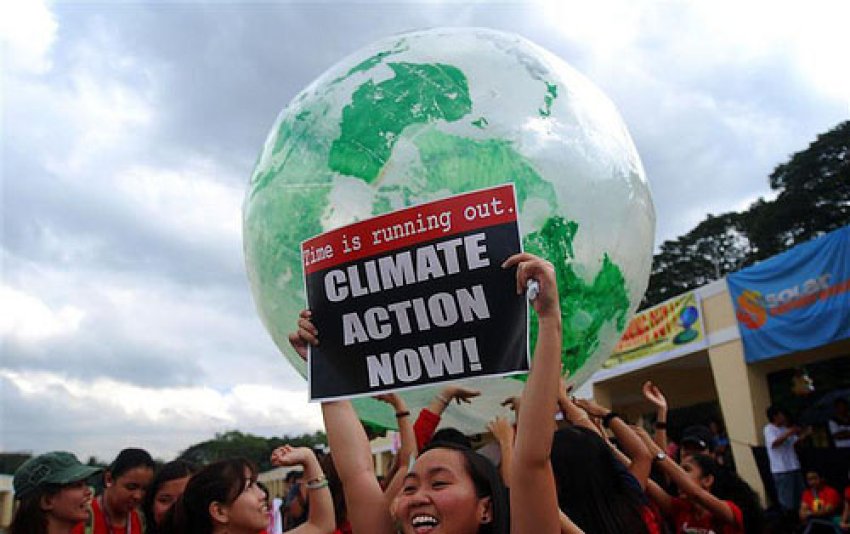
Not so long ago, the polar ice sheet made it almost impossible to circle the North Pole by sea.
But in June, two boats set off to do just that. By mid October, both returned to port successful — the first ships to sail around the pole in a single summer season.
It’s likely the feat greatly tested the crews’ skill and endurance. But their achievement is no cause for celebration.
The Arctic is often called the “planet’s refrigerator” because of the role it plays in regulating the Earth’s climate. Now, it’s clear the refrigerator is breaking down due to global warming.
The crew of one of the ships, the Norwegian-based Northern Passage, said in an October 14 statement that the record-breaking voyage gave “a clear indication that climate change affects the Arctic”.
They said: “Less than 10 years ago the first steel-hulled sailboat managed to get through just one of the [Arctic] passages, and 100 years ago, a circumnavigation [of the North Pole] would have taken six years.”
A week later, a team of 69 international scientists linked to the US National Oceanic and Atmospheric Administration (NOAA) released its annual Arctic Report Card.
It said global warming might have already pushed the Arctic past a tipping point, which made a “return to previous Arctic conditions … unlikely”.
The report said the 2009/10 summer sea ice cover-extent was the third-lowest recorded. What sea ice remains is getting thinner.
Greenland’s massive ice sheet is also under heavy strain. The Arctic Report Card noted “record-setting high temperatures, ice melt and glacier area loss” on the island. Across the Arctic, snow cover melted faster than at any time since records began in 1966.
NOAA chief Jane Lubchenco said the Arctic melt would have a dire impact on the rest of the planet’s ecosystems. She said on October 21: “To quote one of my NOAA colleagues, ‘whatever is going to happen in the rest of the world happens first, and to the greatest extent, in the Arctic’.
“Beyond affecting the humans and wildlife that call the area home, the Arctic’s warmer temperatures and decreases in permafrost, snow cover, glaciers and sea ice also have wide-ranging consequences for the physical and biological systems in other parts of the world.”
Other scientists have also raised the alarm about the Arctic melt in recent weeks. US National Snow and Ice Data Center director Mark Serreze told IPS on September 20, “the Arctic sea ice has reached its four lowest summer extents (area covered) in the last four years”.
As the ice had retreated, the open ocean has absorbed extra heat from the summer sun. The warmer water takes longer to refreeze each winter.
Serreze said the warmer temperature means “the Arctic summer sea ice cover is in a death spiral. It's not going to recover”.
“I hate to say it but I think we are committed to a 4-6°C warmer Arctic”, he said.
If the Arctic region warms by 6°C, the results would be catastrophic. Scientists expect it would trigger the release of huge amounts of methane gas now locked beneath frozen soils and stored in ice crystals on the Arctic Ocean seafloor.
Methane is a powerful greenhouse gas. Over a 20-year period, it is about 70 times more potent than carbon dioxide. If the methane stored in Arctic soils alone escaped, it could more than double the greenhouse gases now in the atmosphere.
The take-home message from this is unmistakable. Unless rapid action is taken to cut carbon pollution, the planet’s climate will be pushed past a point of no return.
The clear and present danger posed by climate change is widely known, but the world’s political leaders and corporate chiefs still recoil from any serious response. Even worse, these powerful vested interests have manipulated the climate debate.
On one hand, fossil fuel interests and corporate media outlets have funded and profiled climate deniers to give the false impression that scientists can’t agree if climate change is a problem at all.
On the other hand, many politicians and businesses have rushed to proclaim they take the threat seriously. But what they accept in principle, they betray in practice.
More alarmed by threats to corporate profits than threats to our ecosystem’s survival, these climate pretenders propose only slow, piecemeal and shallow policies. Their purpose is to delay a move away from fossil fuels for as long as possible.
The climate deniers and the climate pretenders are not so different. One says climate change is a problem, the other says it’s bogus. But both would lead us to an unspeakable future of climate catastrophe.
The way out of this mess is for a people-power movement for climate action to become an overwhelming force for political change.
James Hansen, one of the world’s top climate scientists, has already drawn this conclusion. In his 2009 book Storms of my Grandchildren he said: “The picture has become clear. Our planet, with its remarkable array of life, is in imminent danger of crashing. Yet our politicians are not dashing forward.
“They hesitate; they hang back … But as in other struggles for justice against powerful forces, it may be necessary to take to the streets to draw attention to injustice … Civil resistance may be our best hope.”